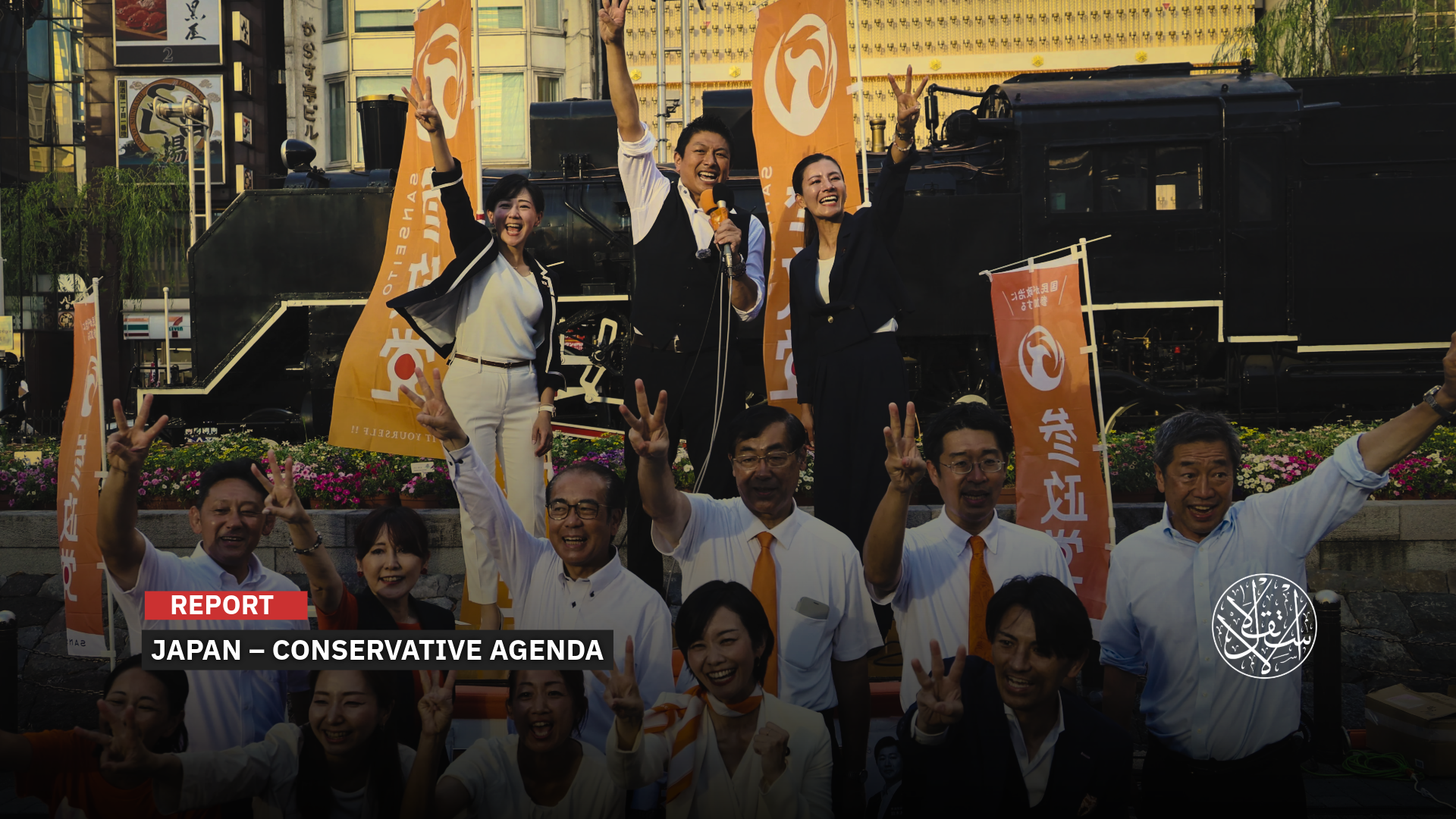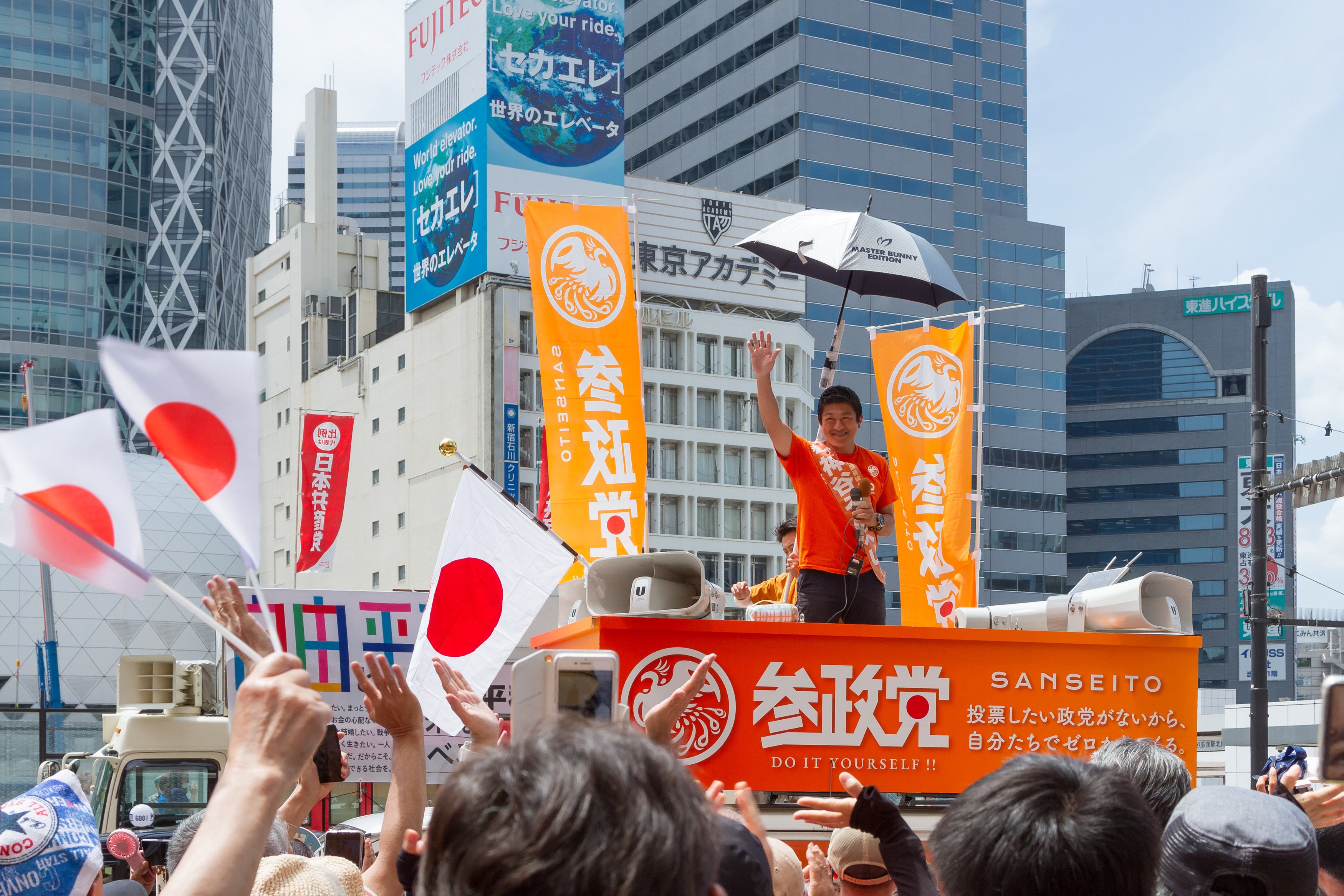Sanseito Party: Will Populism Write a New Chapter in Japanese Politics?

“Inflation, which had been absent in Japan for decades, is now around 3%.”
Japan is witnessing a local version of the global Trumpist wave with the rise of the Sanseito party, led by Sohei Kamiya, who also uses the slogan ‘Japan First’ in his campaign.
The rise of Sanseito reflects that populism is no longer confined to the West, but has become a transnational phenomenon, exploiting the economic crises, demographic changes, and loss of trust in traditional elites that Japan faces.
Just as Donald Trump rose to prominence in the U.S. in 2016, Giorgia Meloni in Italy, and Nigel Farage in the UK, Kamiya is now attempting to reshape the Japanese political landscape.
While Kamiya refuses to describe him as a far-right, observers believe that his party seeks to move Japan towards a more inward-looking nationalism, raising anti-immigration and anti-globalization slogans.
Right-Wing Populism
After nearly 70 years of liberal rule in Japan, the Asian country, which was long considered a model of political stability, has turned towards populism, a trend that has gained ground in several Western countries.
Japan has recently witnessed a significant rise in right-wing populist rhetoric, with the Sanseito party emerging as the main representative of this type of political movement.
Sanseito is influenced by the European and American far-right, adopting slogans from Western parties, and has hosted foreign activists, including the American conservative activist Charlie Kirk, who recently visited Japan before being assassinated in his own country.
Observers believe that the party's slogans and beliefs blend elements of the Alternative for Germany (AfD), the UK Reform Party, and the MAGA movement in the U.S.
The 47-year-old leader of the Sanseito party, Sohei Kamiya, has been described as a mini-Trump, by the media due to his similar style and rhetoric to that of US President Donald Trump.
Kamiya transitioned from being a supermarket manager and former teacher to the leader of a party that attracts a diverse range of supporters, including disgruntled conservatives, young people, and those who believe in conspiracy theories.
The Sanseito party has recently gained popularity and attracted more supporters, capitalizing on the declining popularity of the ruling Liberal Democratic Party, which led to the resignation of Prime Minister Shigeru Ishiba, 68, last July.
Ishiba's resignation was not a sudden move, but rather reflected the accumulation of political, economic, and social problems that made his government incapable of addressing both domestic and international challenges.
In the recent upper house elections, the Sanseito party won 15 seats out of 248, after previously holding only one seat, a meteoric rise reminiscent of the early days of Trumpism a decade ago.
The Liberal Democratic Party has ruled Japan for most of the past seven decades, but under Ishiba's leadership, it lost its majority in the lower house for the first time in 15 years, and then lost its majority in the upper house last July.
Thus, the era of one-party dominance has ended, and Japan has entered a multi-party system unlike anything it has ever seen before.
In the 2024 parliamentary elections, 10 different parties won seats, while 11 parties won seats in the 2025 senate elections, most of which were founded in the last decade, reflecting a deep turn in the Japanese political landscape.
The Sanseito party may currently have only 15 members in the Senate and 3 in the Parliament, but political history shows that populism can grow astonishingly fast.

Deep Turn
The Sanseito party espouses a right-wing populist social agenda, opposing migration and immigrants, and adopting slogans such as ‘Japan First’ and ‘Protecting Japanese identity’.
It also advocates for nuclear weapons to counter threats to Japan.
It opposes same-sex marriage and LGBTQ+ rights, and urges young women to focus on having children rather than pursuing careers.
It emphasizes traditional values dating back to the 1890 Imperial Rescript on Education.
These ideas have drawn widespread criticism both domestically and internationally, but they have also garnered growing public support.
By focusing on the immigration issue in his campaigns, Sohei Kamei presented a nationalist vision that rejects reliance on immigrants, warning of a silent invasion that threatens Japanese identity.
The number of foreigners in Japan has risen to about 4 million, or roughly 3% of the population, fueling fears among some Japanese of profound social and demographic changes.
He claimed that the number of immigrants has doubled in recent years due to Japan's increasing involvement in economic globalization agreements.
He argued that if this rate continues, foreigners will make up 10% of the population within a decade, echoing Trump's warnings about white America losing its identity.
Sanseito's rhetoric also adopted a narrative similar to Trump's, based on the idea that foreign workers steal jobs and threaten social stability—a message that resonated with segments of the Japanese electorate, particularly young people.
This momentum prompted the government to announce its goal of achieving zero undocumented immigrants, along with potential restrictions on new arrivals and a focus on ensuring social integration.
However, the party faces accusations of discrimination and racism, especially after Kamei used derogatory language against Koreans living in Japan.
Kamei also exploited the issue of demographic change, as Japan's population this year fell to around 120 million, down from over 126 million in 2020.
Just as Trump relied on conspiracy theories about a deep state secretly controlling the United States, Kamei adopted a similar narrative, claiming that Japanese politics is dominated by corrupt, hidden elites in the media and business sectors.
He positioned himself as the voice of the people against the establishment, and his party's YouTube channel, with over 500,000 subscribers, serves as an effective platform for disseminating these ideas to a wide audience.
Kamei denies that his party is pushing politics towards the far right.
“When it comes to opposing globalization, we are always labeled as far-right... but there are both conservatives and liberals within the Sanseito party,” he says.
As the world grapples with the effects of globalization and economic crises, Kamei appears to be preparing to reshape the future of politics in his country, potentially opening the door to a broader shift that could redefine Japan's role both domestically and internationally.
Betting on a longer-term future, he anticipates that smaller parties will join right-wing coalitions in Japan's increasingly fragmented political landscape.
“My ultimate goal is to build a party strong enough to participate in forming the government and shaping national policy in Japan,” he says.
To achieve this ambition, the Sanseito party needs to win 50 to 60 parliamentary seats in the next election.

Growing Division
Japan is currently experiencing a period of political uncertainty, amid rising tensions with China and a strained relationship with its US ally.
Departing PM Shigeru Ishiba ordered his ruling Liberal Democratic Party (LDP) to hold an emergency election to choose a new leader on October 4.
To be eligible to run in previous leadership elections, candidates had to receive a minimum of 20 nominations from party members of parliament.
The selection process typically involved a period of national debate and campaigning, culminating in a vote by party members of parliament and ordinary members.
Ishiba ended his term, which lasted less than a year, saying he took responsibility for the disappointing results in the upper house elections.
Voters punished his ruling party for its handling of the economy, migration, trade, and relations with the Trump administration, as well as a political-financial scandal and a persistent rice shortage.
Ishiba's coalition lost 19 of the 66 seats up for reelection.
Japan is undergoing an unusual period of rapid change, with inflation, which had been absent for decades, is now around 3%.
Analysts say any weak performance by Japan's ruling coalition could shake investor confidence in the world's fourth-largest economy.
Anti-foreigner sentiment has also risen amid the influx of international workers and tourists.
Trade talks with the Trump administration were difficult and unpredictable, with many Japanese feeling betrayed by its threats of high tariffs.

While the LDP no longer holds a majority in parliament, its leader remains the frontrunner for the next prime minister, given the fragmentation of the opposition.
Among the leading contenders is former Foreign Minister Toshimitsu Motegi and Agriculture Minister Shinjiro Koizumi
The hard-line conservative Sanae Takaichi, who currently leads in the latest polls, has also declared her intention to run for the party leadership.
She narrowly lost to Ishiba in the second round of the LDP leadership election last year.
If elected, she would become Japan's first female prime minister.
Sources
- ‘Japanese first’: the mini-Trump on the rise as population crisis bites
- How Japan’s Next Leader Will Be Chosen — and Why It Matters
- What to Know About the Japanese Prime Minister’s Resignation
- Japan’s Ruling Party Faces Choice of Wooing Right or Rebranding
- As Japan Votes, a Trump-Inspired Politician Grabs the Spotlight











